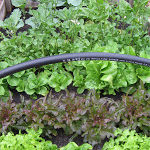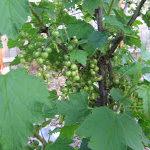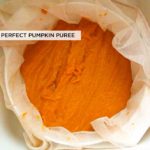My beets are still pretty small, but I have been cooking up the greens for a few weeks now. I use some kitchen scissors to gently snip a couple outer leaves from each plant, so plenty remain on each beet. The plant then grows more to replace the lost leaves.
 For years I have been wondering if perhaps I am planting my beets too close together. They always seem to get this wilty, grayish blotches on the leaves that I assumed was some sort of mildew from lack of air circulation. I have since learned this is actually a pest called “beet leafminer”.
For years I have been wondering if perhaps I am planting my beets too close together. They always seem to get this wilty, grayish blotches on the leaves that I assumed was some sort of mildew from lack of air circulation. I have since learned this is actually a pest called “beet leafminer”.
The condition happens when the leafminer fly larva is laid in the leaves. They hatch and feed off the leaf, which creates these blotchy areas. There is a similar pest for swiss chard and spinach as well. Typically they are not active enough to kill the plant, but the infected leaves end up going to the chickens instead of my dinner plate.
It helps to cut out the blotched leaves, so they cannot as easily spread to the other plants. I have also heard that covered the plants with a plastic cloche until they are fully mature also prevents the insect from having access to the leaves. Be aware though that they can also lay larva in the soil, which overwinters and hatches the next season. This is yet another great reason to practice crop rotation!
Go forth and eat greens!




 Upgrade your hanging basket game!
Upgrade your hanging basket game!  Here’s
Here’s

 This cluster was about the siz
This cluster was about the siz



 I start with a
I start with a


very interesting, I learn something today.
thank you
I ran into the same problem with my beets and chard this year early in the season. Through the advice of a fellow gardener, I tried spraying diluted natural neem oil (http://en.wikipedia.org/wiki/Neem_oil) on the leaves of both once a day (usually in the evening to avoid burning). Within a week or so, the greens were looking much better, and it seems to have taken care of them outright.
What a fantastic piece of advice – I’ll try this!
AHA! This makes sense.
I had the splotches on my spinach, chard and beets this year. I mistakenly thought it was not enough watering. As you say though, the chickens will eat it anyway. And I must say, my family just picked around it on the larger chard leaves as well. Seems like once I picked the affected leaves, then it reduced the spread.